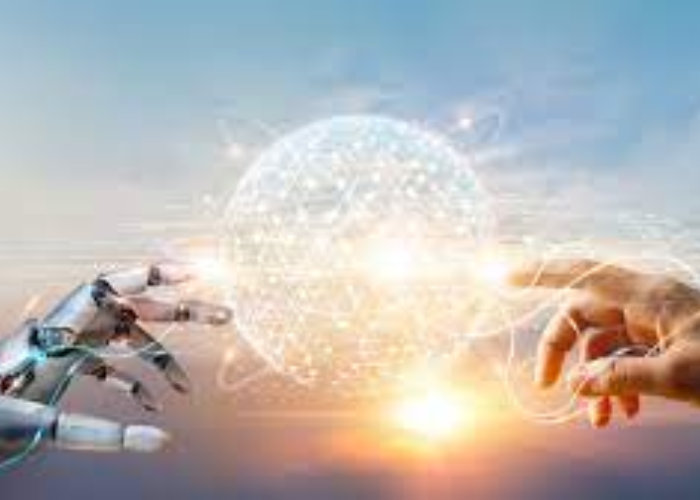In an era where technology permeates nearly every aspect of our lives, the concept of connectivity has undergone a profound transformation. The once-simple notion of staying in touch with friends and family has evolved into a complex web of interconnections that spans continents and bridges cultures. This hyper-connected world is not only reshaping how we communicate, but also revolutionizing industries, societies, and the very fabric of human interaction. In this article, we will delve into the multifaceted role that technology plays in redefining connectivity and explore its implications for the present and future.
The Evolution of Connectivity
Connectivity, in its most fundamental sense, refers to the ability to establish a link or relationship between two or more entities. Historically, this primarily involved interpersonal interactions within local communities. Letters, telegrams, and later, telephones, enabled people to transcend geographical boundaries and communicate with those far away. However, these forms of communication were relatively slow and limited in scope.
The advent of the internet marked a watershed moment in the evolution of connectivity. Suddenly, information could be transmitted globally at unprecedented speeds. Email revolutionized written communication, while the emergence of social media platforms like Facebook, Twitter, and Instagram created virtual spaces where individuals could share their lives, thoughts, and experiences with a global audience. These platforms not only facilitated personal connections but also paved the way for the widespread dissemination of news, ideas, and culture.
Hyper-Connectivity: A New Frontier
As technology continued to advance, the world transitioned into an era of hyper-connectivity. This term refers to a state in which people, devices, and systems are seamlessly interconnected, leading to an intricate network of relationships that transcend physical and temporal boundaries. Hyper-connectivity extends beyond personal interactions and encompasses a wide array of sectors, including business, healthcare, transportation, and more.
The proliferation of smartphones played a pivotal role in driving hyper-connectivity. These pocket-sized devices have become essential tools for modern life, enabling us to access information, communicate, and engage with various digital services on the go. With the rise of the Internet of Things (IoT), everyday objects are now embedded with sensors and connected to the internet, allowing them to collect and exchange data. This connectivity has given rise to smart homes, smart cities, and a host of innovative applications that streamline processes and enhance our quality of life.
Bridging Gaps and Fostering Inclusion
One of the most remarkable impacts of technology-driven connectivity is its ability to bridge gaps and foster inclusion. Geographical, cultural, and socio-economic barriers that once limited communication and collaboration are gradually being dismantled. Online education, for instance, has democratized learning by making educational resources accessible to individuals regardless of their location. Massive Open Online Courses (MOOCs) and e-learning platforms have empowered people to acquire new skills and knowledge, contributing to personal and professional growth.
Social media has also played a pivotal role in amplifying underrepresented voices and social causes. Movements like #BlackLivesMatter and #MeToo gained momentum through online platforms, enabling marginalized communities to share their stories and advocate for change on a global scale. This newfound connectivity has spurred conversations, challenged societal norms, and pushed for greater equality and justice.
Transforming Industries and Economies
In the business world, technology-driven connectivity has catalyzed a paradigm shift. Traditional brick-and-mortar models have been disrupted by e-commerce, as online shopping platforms offer convenience and choice to consumers worldwide. Moreover, businesses can now operate remotely, tapping into a global talent pool and reducing the need for physical office spaces. This shift towards remote work was significantly accelerated by the COVID-19 pandemic, showcasing the resilience of hyper-connectivity in the face of adversity.
Supply chains have also been transformed by technology. The ability to track and monitor goods in real time has optimized logistics and inventory management. This not only reduces costs but also enhances transparency and sustainability across industries. In agriculture, for instance, sensors and data analytics enable farmers to monitor soil conditions, weather patterns, and crop health, leading to increased yields and resource efficiency.
The Challenges of Hyper-Connectivity
While hyper-connectivity offers immense opportunities, it also comes with its fair share of challenges. The digital divide remains a pressing issue, as not all individuals have equal access to technology and the internet. This disparity exacerbates existing inequalities and hinders marginalized communities from fully participating in the benefits of connectivity. Bridging the digital divide requires concerted efforts from governments, NGOs, and private sector entities to ensure that everyone has the tools and skills to navigate the digital landscape.
Another concern is the erosion of privacy and the rise of cybersecurity threats. As more personal and sensitive data is exchanged online, the risk of data breaches and unauthorized access increases. Safeguarding digital identities and information has become a critical priority. Striking a balance between convenience and security is a complex task that necessitates innovative solutions and robust regulations.
The Future of Hyper-Connectivity
As technology continues to evolve, the trajectory of hyper-connectivity appears to be both promising and challenging. The deployment of 5G networks is set to further accelerate connectivity, enabling faster data speeds and lower latency. This will be instrumental in supporting emerging technologies such as augmented reality (AR), virtual reality (VR), and autonomous vehicles. These innovations have the potential to reshape industries, entertainment, and even urban planning.
Artificial intelligence (AI) and machine learning are also poised to play a pivotal role in shaping the future of hyper-connectivity. These technologies can analyze massive datasets to uncover insights and patterns, leading to more informed decision-making. AI-powered chatbots and virtual assistants are becoming increasingly sophisticated, providing personalized experiences and enhancing customer interactions in various sectors.
Conclusion
The concept of connectivity has evolved from its humble origins to become an intricate web of relationships, empowered by technology. The hyper-connected world we inhabit today is marked by the seamless flow of information, ideas, and experiences across boundaries. This evolution has reshaped industries, revolutionized communication, and fostered inclusivity. However, it is essential to address the challenges that come with hyper-connectivity, such as the digital divide and cybersecurity threats.
As we navigate the future, the role of technology in redefining connectivity remains pivotal. The ongoing development of innovative solutions, regulations, and ethical frameworks will determine how we harness the power of hyper-connectivity for the greater good. By fostering a global community that is inclusive, secure, and well-informed, we can unlock the true potential of a hyper-connected world.




